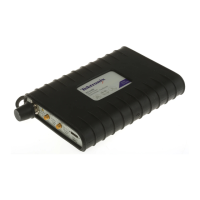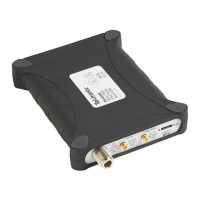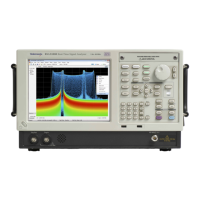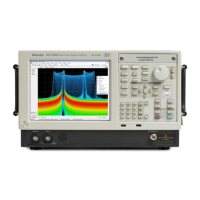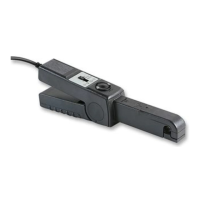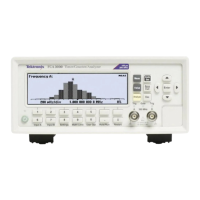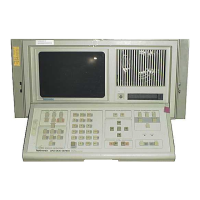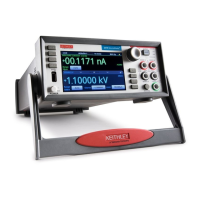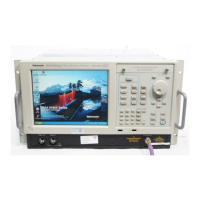
Do you have a question about the Tektronix RSA6114A and is the answer not in the manual?
| Real-Time Bandwidth | 110 MHz |
|---|---|
| Analysis Bandwidth | Up to 110 MHz |
| Maximum Analysis Bandwidth | 110 MHz |
| Input Impedance | 50 Ω |
| Amplitude Accuracy | ±0.5 dB |
| Input Connector | N-type female |
| Maximum Input Power | +30 dBm |
Safety precautions to prevent fire and personal injury during product operation.
Definitions of terms used throughout the manual for user understanding.
Explanation of symbols and terms that may appear on the product itself.
Details on Electromagnetic Compatibility standards met by the instrument.
Information on safety standards and certifications for electrical equipment.
Describes environmental pollution levels and their impact on product rating.
Information about the environmental impact and end-of-life handling of the RSA6100A.
Information about the environmental impact and end-of-life handling of the RSA5100A.
Highlights the main capabilities and advantages of the RSA6100A and RSA5100A series.
Lists available documentation for the instrument and where to find them.
Information on how to obtain and install software upgrades for the instrument.
Explains icons and symbols used throughout the manual for clarity.
Initial steps before installing the instrument, including unpacking.
Lists standard accessories included with the RSA6100A series instrument.
Details about the power cords provided with the analyzers for different regions.
Lists standard accessories included with the RSA5100A series instrument.
Lists optional accessories available for purchase for the analyzers.
Describes the available software and hardware options for the RSA6100A series.
Describes the available software and hardware options for the RSA5100A series.
Specifies operating requirements such as power, voltage, and environmental conditions.
Instructions for connecting peripherals and networks to the instrument.
Step-by-step guide to power on the instrument correctly.
Step-by-step guide to power off the instrument correctly.
Procedure for safely disconnecting power from the instrument.
Guidance on connecting and configuring an external monitor for dual display.
Instructions for customizing Windows display settings for optimal viewing.
Procedures for running instrument diagnostics and performing incoming inspection.
Guidelines for cleaning and maintaining the instrument's physical condition.
Detailed instructions for safely cleaning the instrument's exterior and display.
Steps to upgrade the instrument's software and install new options.
Procedures and considerations for returning the instrument for service.
Introduction to the instrument's front panel controls and display elements.
Overview of the main controls on the instrument's front panel and their functions.
Instructions on how to connect RF signals to the instrument's input.
How to initiate and terminate data acquisition processes on the instrument.
Explains the different modes and commands for controlling data acquisition runs.
How to use markers to measure signal parameters like frequency and power.
A step-by-step guide to using markers for precise signal measurements.
Describes how markers are displayed and their different types (absolute, delta).
Details the controls available in the marker toolbar for manipulating markers.
Instructions on how to add new markers to analyze signals.
How to configure marker properties and settings using the Define Markers panel.
Using touch gestures to interact with the instrument's display and controls.
Common controls found around the graph area for specific display types.
Fundamental concepts of real-time analyzers and their displays.
Explains the core functionality and features of real-time spectrum analyzers.
Overview of different types of displays available for signal analysis.
How to move between and manage multiple analysis displays.
Step-by-step guide to choosing and configuring analysis displays.
Method for selecting multiple displays for simultaneous analysis.
Using predefined display configurations for specific applications.
Explains common messages and recommended actions during operation.
How to adjust acquisition and processing settings for different measurements.
Restoring the instrument to its default factory settings.
How to search for specific signal characteristics based on power or mask criteria.
Applying external gain or loss corrections to signal measurements.
Demodulating audio signals to help identify unknown radio signals.
